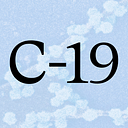Delayed Covid-19 Vaccination Causes More U.S. Deaths
The vaccine rollout is too slow, and has resulted in the deaths of health care workers and nursing home residents
While the speed of Covid-19 vaccine development is unprecedented, the delivery of the vaccine to the United States population — promised by the Trump Administration at “Warp Speed” — has been remarkably slow.
On October 26, President Trump announced that the administration “will deliver 100 million doses of a safe vaccine before the end of the year, and maybe quite a bit sooner than that.” On Nov. 13, Moncef Slaoui, director of the administration’s Warp Speed program, announced the plan to vaccinate 20 million Americans by December. The FDA granted emergency use of the Pfizer Covid-19 vaccine on December 11, and distribution began on December 14. Characteristics of the vaccine were known months earlier, allowing for the planning and preparation of vaccine distribution strategies.
However, by the end of December, only 4 million Americans had been vaccinated, 1.2% of the population. Only West Virginia had vaccinated its nursing home residents with a first dose by January 1; it will complete a second dose soon.
“It is not a lack of vaccine that is the source of delay, but inadequate public health funding, leadership, organization, and communication.”
The U.S. Centers for Disease Control and Prevention (where I worked for 34 years as an epidemiologist, retiring last June) has recommended that vaccination against Covid-19 first be offered to health care workers and residents of nursing homes. Some states are following the CDC guidelines, others are adopting their own criteria. I have estimated the number of deaths from Covid-19 that would be averted in January and daily had the U.S. health care workers and the residents of nursing homes been vaccinated by January 1 as Americans were told they would be. For nursing home residents, I estimate deaths averted in each state. The most complete and current data on health care workers is available from a collaboration of the Kaiser Health Network and the Guardian. The AARP reports on deaths among nursing home residents by state and month.
I found that vaccination of health care workers by January 1 would have saved approximately 194 health care worker deaths in the U.S. in January, 2021 — approximately six per day. In the U.S. overall, more than 22,000 deaths among nursing home residents would not have occurred in January had this population been vaccinated by January 1 (see Table 1). Nursing home resident death rates in December from Covid-19 varied greatly — from less than 1% in 11 states to more than 3% in 13 states (Table 1). Numbers of deaths preventable by vaccination of this population ranged from fewer than 100 in Hawaii, Delaware, Alaska, the District of Columbia, Vermont, Idaho, Maine, Wyoming, New Hampshire, Oregon, and Utah to more than 1,000 in Indiana, Texas, Illinois, Ohio, and Pennsylvania (Table 1).
Pfizer — one of the Covid-19 vaccine producers — announced on December 17: “We remain confident in our ability to deliver up to 50 million doses globally this year and up to 1.3 billion next year, and we look forward to continuing to work with the U.S. government to deliver our vaccine to the American people.” Vaccine coverage of U.S. health care workers and nursing home residents with two doses of the vaccine would require approximately 30 million doses — apparently available in December. Promised rates of immunization in the U.S. have have fallen far short.
Meanwhile, by January 8, Israel had vaccinated 20% of its population. In 1947, with threats of an outbreak of smallpox, New York City vaccinated more than 6.3 million residents in a month, 5 million of those within a two-week period. Strategies for vaccine distribution in the U.S. are available. It is not a lack of vaccine that is the source of delay, but inadequate public health funding, leadership, organization, and communication. The mortality consequences are calamitous and unacceptable.

